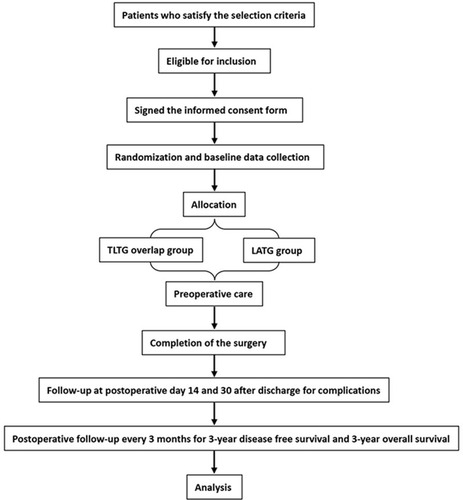Figures & data
Figure 2 Intraoperative images showing the radical D2 lymphadenectomy during total gastrectomy. (A) Splenic hilar lymph node dissection. (B) The lymph nodal dissection near the origin of the common hepatic artery, left gastric artery and the splenic artery. (C) The lymph nodal dissection near the right gastroepiploic artery, right gastroepiploic vein, and removal of the subpyloric lymph nodes.

Figure 3 Schematic representation of the technique of esophagojejunostomy after totally laparoscopic total gastrectomy by overlap method. (A) Division of the distal esophagus with a linear cutting closure device. (B) The gastric tube is passed through the cut end of the esophagus. (C) One arm of the linear staple is inserted into the proximal jejunum. (D) Under the guidance of nasogastric tube, the other arm of linear stapler is inserted into the stump of the esophagus. (E) The staples were fired and the esophagojejunal linear anastomosis is performed. (F) Hemostasis along the staple line is confirmed. (G) Closure of the common opening with barbed suture. (H) Completion of the esophagojejunal anastomosis. (I) The overview of all the anastomoses after the completion of the surgery.

Table 1 Postoperative Follow-Up

